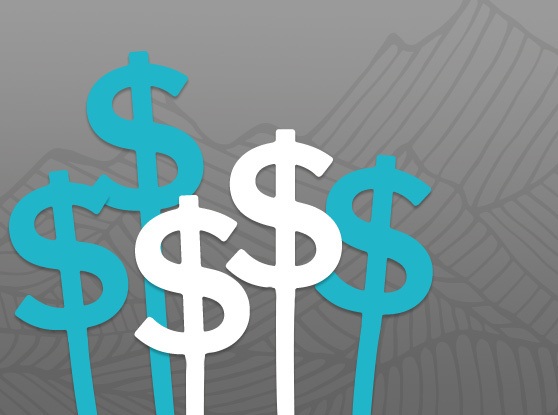
A Network Based on Quality Over Quantity Wins the Sale

In our article, Leverage Your LinkedIn Profile to Attract B2B Customers, we gave you a blueprint to elevate your LinkedIn to attract your ideal customer. The next step is connecting with people and building your network. While the number of contacts you have is important, the quality and diversity of your network and the depth of connections in a specific industry are much more impactful when using Linkedin for selling.
Connect With Close Circles
Start by adding people in your professional life as a connection.That includes your team members, channel partners, and VARs that you interact with regularly. You can also connect with customers or prospect contacts if you're speaking to them frequently. If you have most of those contacts in your Outlook contact list or iPhone contacts, you can link those in LinkedIn to make the process easier. Where you don’t have a direct match in Linkedin, you’ll need to do some searching. Searching in LinkedIn is fairly easy and you can refine the search using their former employers, alma mater, their geographic region, etc.
Once you find the person, you need to connect with them. This is simple enough in concept in LinkedIn, but that simplicity leads to a challenge. If you simply click the connect button, Linkedin will send a generic email that says, “I’d like to add you to my network.” That email lacks any personal touch and will almost automatically be tossed in the virtual garbage can.
A more effective way to request a connection is to create a personalized connection request using the “customize your email ”capability. If you’re using the website, this option pops up as soon as you find the person and click “Connect.” If you’re using the app, you’ll want to avoid pressing the “Connect” button and instead select the “More” button where you can then select the “Personalize Invite” option.
Keep the request simple and direct. Make sure that you address how you’re connected to them (met them at a conference, know them through a colleague, etc.), specify why you want to connect and most importantly spell their name correctly. If this is an “out of the blue” connection request, flatter the person’s strengths or their position in the market. Explain your background so they understand why they should connect with you. This could include an explanation of how partnering with you could benefit them. And always end with a warm sign-off. Your chances of success are even better if you’ve reacted to a few of their posts or shares with thoughtful comments; that shows that you’re interested in the things that interest them and makes you less of a stranger.
As you start to reach out to people, you’ll probably see an increase in requests to connect with you. Don’t just click accept blindly. Make sure you look at who is asking you to connect, what their background is, and then decide if you want to add them to your network sphere. You may also want to read their invites to take some best practices. LinkedIn may also start to suggest “People you may know” based on your network and your profile. Review the suggestions and pick those that match your ideal customer.
One suggestion we have for the CROs and CEOs of our portfolio companies is for them to connect to their peers in the Insight family. This enables all of the companies to leverage the networks and relationships of the other companies. By working together we can increase our network reach and hopefully help all of our companies grow. Also, if you are an Insight portfolio company, you can opt-in to our "Partner Program" and turn your portfolio peers into customers.
A connection request either right before or immediately following a meeting can generate a successful connection. You can later use that connection to help you connect to other individuals at the company. Given that an average buying decision includes 6-7 decision makers, it’s important to expand your network within prospects to ensure maximum coverage. Engage these contacts with relevant information to establish yourself as an expert and a consultative sales person.
You can also add a link to your Linkedin Profile on your email signature. If you include your LinkedIn profile in your email signature, recipients can easily access your profile and learn more about you. This is especially useful if you are sending emails to people who aren’t familiar with your services. Before you do this, you’ll need to adjust the Linkedin URL. When you initially sign up for Linkedin, you’re assigned a generic URL with a ton of numbers and letters to make sure that your URL is unique. You can customize the URL by going into the Edit Profile section of Linkedin and selecting Edit URL. You can then make this URL more specific to you and what you do. Then you can paste the custom URL into your email signature.
Be A Part of the Right Groups
And the final way to grow your network is to join groups. You can search for groups the same way that you search for people. Below the search bar, select “More” and then “Groups.” You can ask to join more selective groups, and, once they review your request and approve you, you can start connecting to others in that group. Groups are also a great source of material that you can share on your profile and further enhance your expert status. You now have the keys to unlock your networking potential. Keep in mind that the secret to success in these interactions is to be authentic and consistent.
And once you’ve signed a deal, don’t neglect the contacts that you’ve made. Those contacts may be able to help you with references, referrals, or cross-sell and upsell opportunities. If you continue to offer valuable information and insight and provide an outstanding service, your customers can become a huge source of new opportunities for you.
Good luck and happy networking.
Did You Read Part 1?
Make sure to read Leverage Your LinkedIn Network to Attract B2B Customers, if you didn't read it prior to this article.
Read Now








